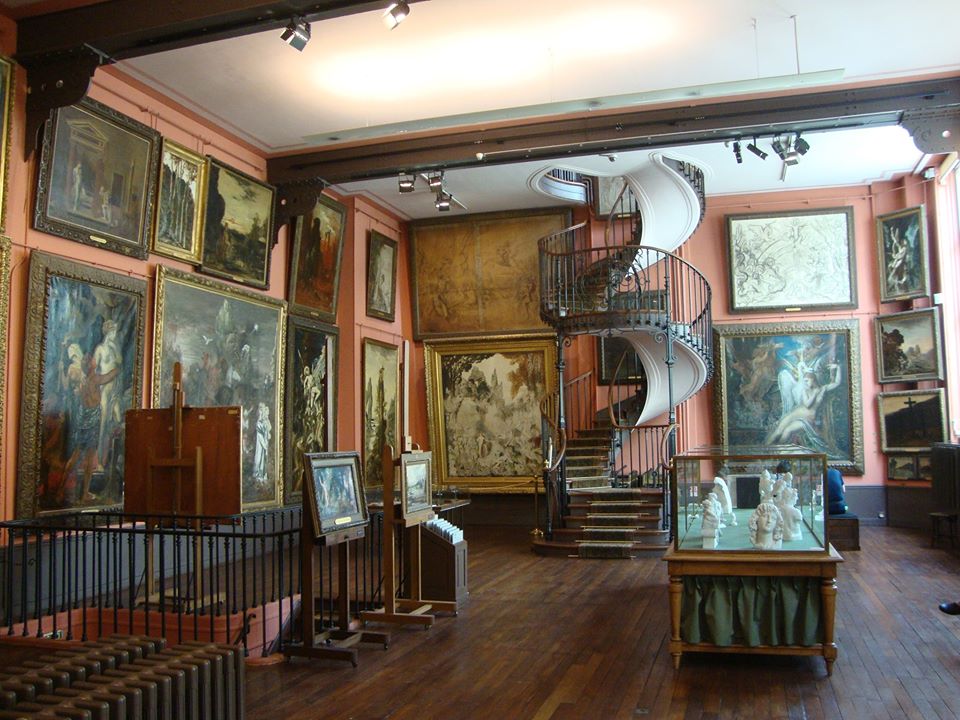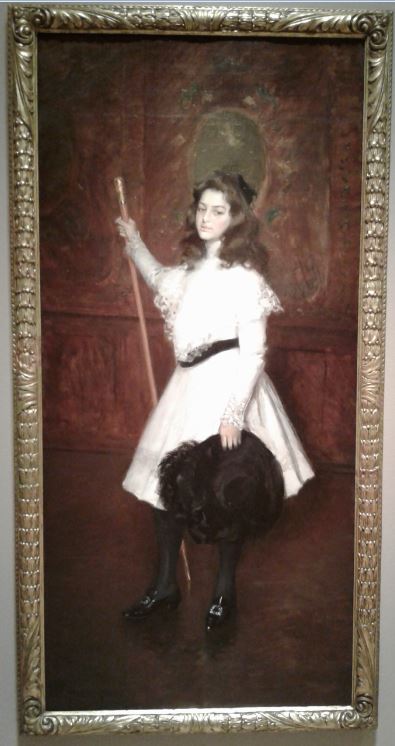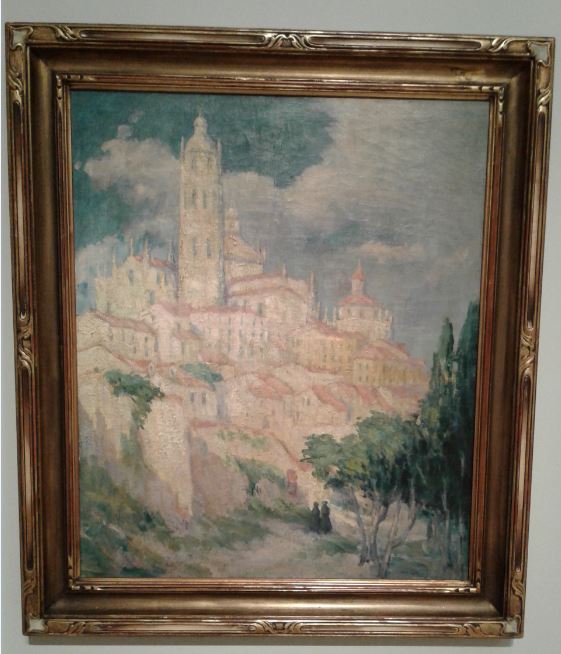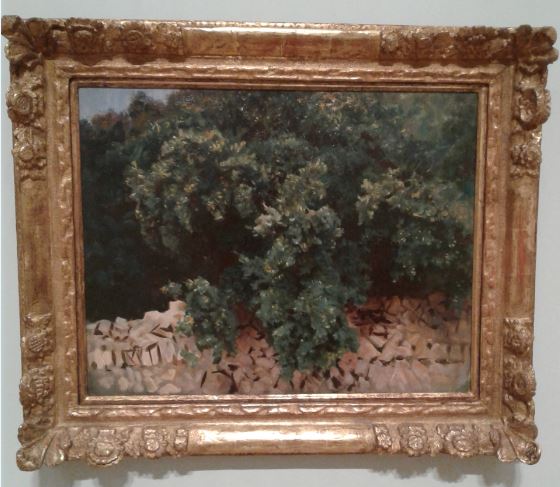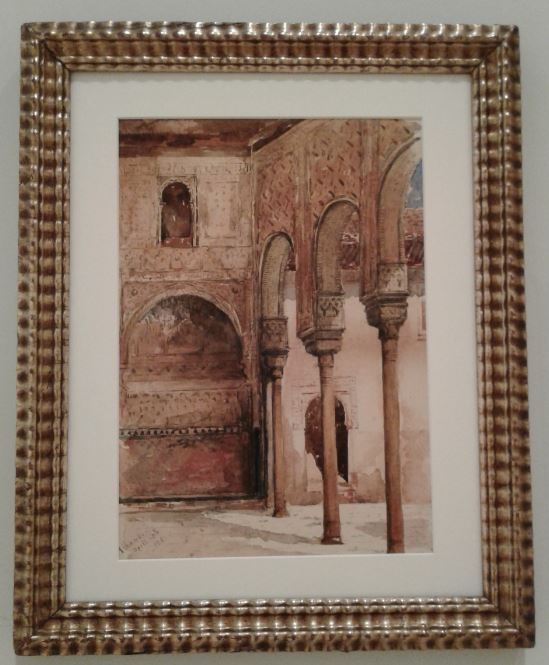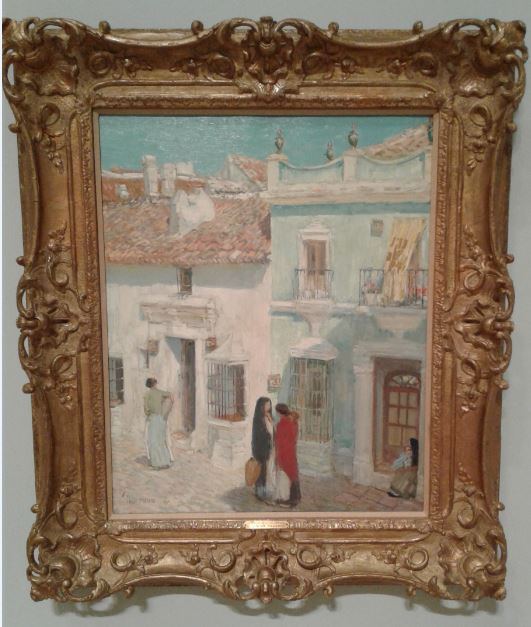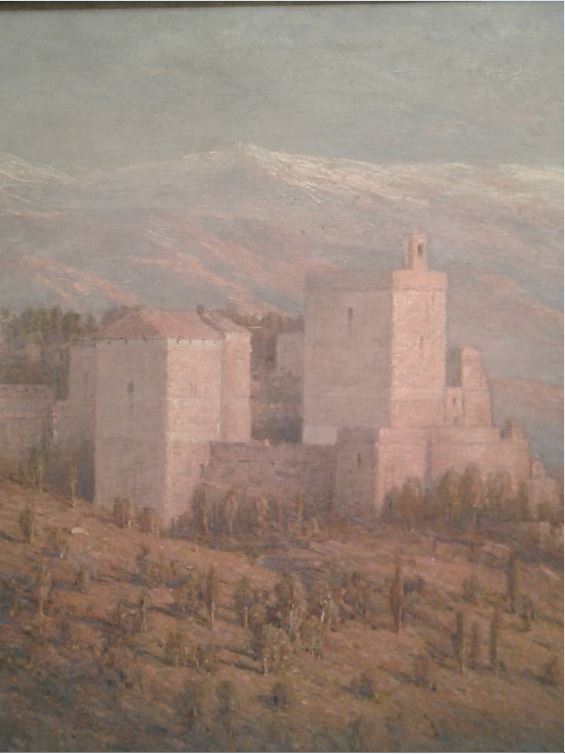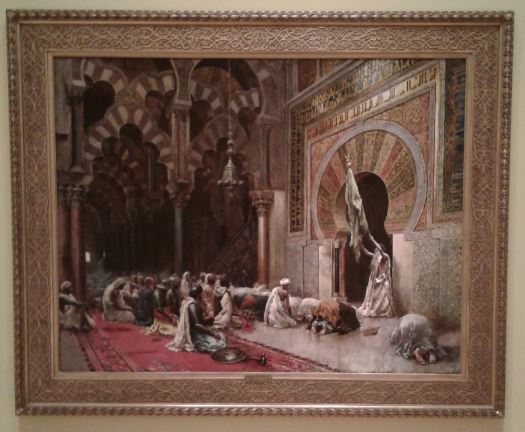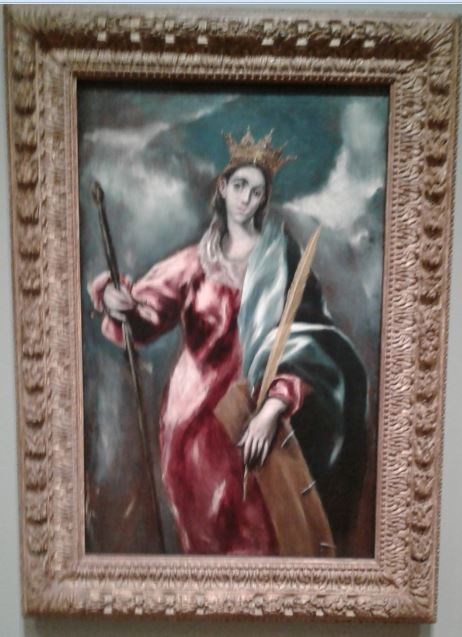When you first read parts of the American Players Theatre description of Christopher Fry’s A Phoenix Too Frequent, you feel you might be about to experience a challenging tragic drama:
In ancient Greece, Dynamene is prepared to die from grief over the death of her husband and has barricaded herself, fasting, in his tomb. She has brought her faithful servant along to die with her (a plan that said servant is not 100% on board with).
But I have taken that entirely out of context and Christopher Fry has instead provided us with a witty understated comedy that plays off classic sources from Homer to Sophocles to of course, Shakespeare! Instead we find ourselves roaming from troubled to amused to relieved…as the somber circumstances play out via Fry’s immaculate verse…to the captivating human interaction…laced with humor in character definition, an absurd situation, and his carefully manipulated clever English! It’s all a delight until the crisis appears when all seems lost. But as with most classics, there is a deus ex machina of sorts and life and love prevail. So that covers the play…but again from the APT:
Here we have the classic “boy-meets-girl, boy-dies, girl-meets-handsome-soldier-in-the-first-boy’s-tomb-while- waiting-to-die-with-her-faithful-servant” story. It may sound ridiculous. And it is. But youth is often a ridiculous ride, and it’s hard to be hopeless for long when you’re on it. Feel free to laugh with them as they attempt to find their way in the literal dark, with a bellyful of wine and all the earnest, wobbly assurance of people dealing with death just as they’re learning to live life. Quirky and Greeky and oh so funny, with a deceptively deep story, this one promises a delightful time
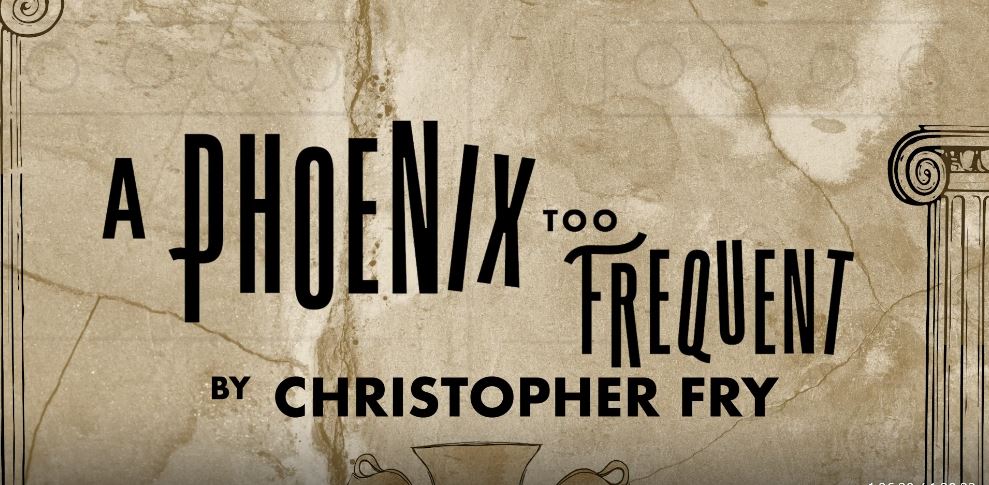
Now our story revolves around just three characters: our widow, Dynamene played by Phoebe Gonzalez, her handmaiden, Doto played by Tyler Meredith, and our handsome stranger, the soldier, Tegeus played by Christoper Sheard. These three weave the words into actions that tell the story with complete awareness of the absurdity of the situation and cleanly emphasize the humor in the text. Director Keira Fromm has them interacting in and around the minimal stage with a certain grace…even during the various crises and entanglements shall we say. It works on every level and certainly invites us to stay engaged with the players, the story. and the action. And of course the emphasis on the humor seems invisible until it subtly reaches our conscious funny bone.
And the minimal stage couldn’t be better suited to the action, the deceased’s crypt, benches, and the entrance are all clearly defined and perfectly appropriate to an undisclosed but clearly ancient Greece. Thank you Jeffrey Kmiec! And the blue lighting was dramatic, ethereal, and unobtrusive all at the same time. Something that I wouldn’t have ever considered….so thank you, Jesse Klug!
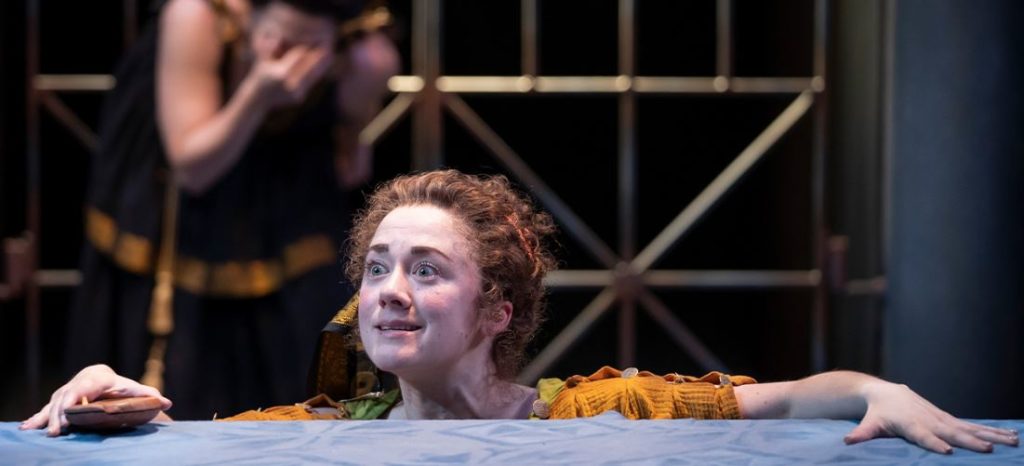
The opening scene quickly introduces us to the world weary and street smart Doto who gets a lot of the early laughs and chuckles as she lays out her predicament. All worked around a restlessly sleeping Dynamene (how Ms. Gonzalez manages to do this without laughing is funny in itself…Ms. Meredith get a similar ‘respite’ later but gets to do it out of sight of most of the audience instead of center stage! ). So you want to feel for Doto right away and it is a great deal of fun to listen to the rather unique English she employs and the street cred she exhibits when Tegeus ‘bursts’ on the scene! Bravo Ms. Meredith!

And the pas de deux between Dynamene and Tegeus is magic. Not only the language but the dance itself as they struggle to engage and keep their distance and engage while moving about the set. There isn’t even a more convincing scene in Shakespeare! The timing, looks, leers, restraint, and finally surrender to love all works to perfection. Ms. Gonzalez and Mr. Sheard amplify those emotions without our noticing any effort and with our full approval. And it makes the coming crisis that more shocking and poignant when it comes. I won’t discuss it any further.
Given the feel of the poetry, the period, the geography, and the story, this is plainly a ‘classical piece’, and more appropriate to this season in particular as it follows a similarly toned and previously presented Iliad and the other current production of Sophocles Oedipus. This seems like a prime central focal point of a ‘Greek’ triad!
A Phoenix Too Frequent runs through October 3, 2021 and tickets are available for the in person presentations at the Touchstone Theatre or to stream online!
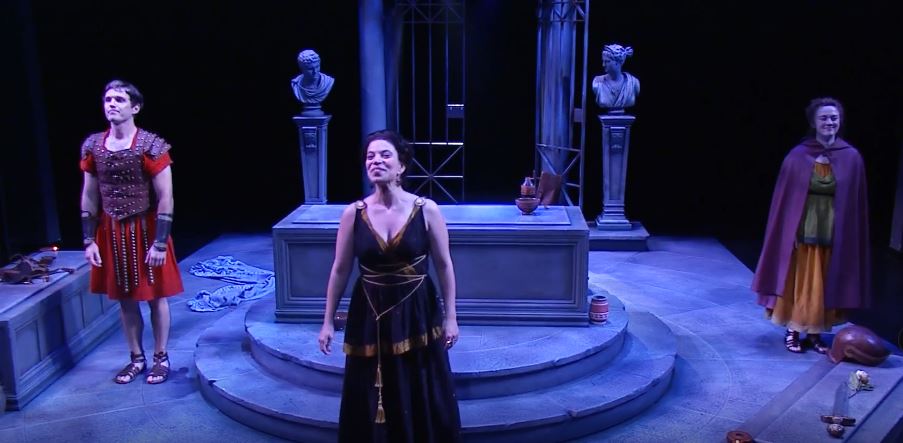
you fall easily into superlatives…
